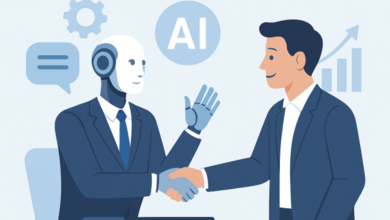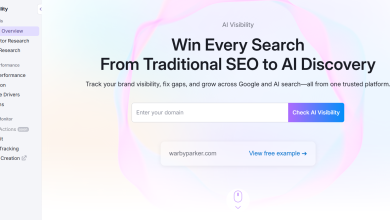
The Hard Truth About AI Transformation
The biggest strategic error in modern business? Treating AI agents like software purchases instead of team investments. This misconception is why most companies are missing the transformation happening right now. Latest industry intelligence shows that 85% of companies plan to implement AI agents by 2025, propelling sector valuation from $5.4 billion to $7.6 billion in a single year—representing a 45.8% surge that’s generating extraordinary business transformation opportunities.
Yet more than 80 percent of companies still report no material contribution to earnings from their gen AI initiatives, according to McKinsey’s latest research. Strong strategy, not technology, is what makes leaders stand out from the rest. After analyzing hundreds of enterprise implementations across Fortune 500 companies, I believe we’re witnessing the most significant transformation in business operations since the internet revolution.
The companies that understand this aren’t just gaining efficiency—they’re fundamentally reshaping competitive dynamics in their industries. The question isn’t whether AI agents will disrupt your business model. The question is whether you’ll lead that disruption or become its victim.
The Framework That Separates Winners from Waiters
Beyond Automation: The Agentic AI Revolution
Traditional AI follows scripts. Agentic AI makes decisions. This distinction matters more than most leaders realize. While competitors deploy basic chatbots, market leaders implement Enterprise Decision Agents that analyze market conditions, assess risks, and recommend strategic pivots faster than human executives can process the same information.
By 2028, 38% of organizations will have AI agents as team members within human teams, according to Capgemini’s research. This isn’t future speculation, it’s happening now across industries from financial services to manufacturing.
Consider the transformation happening in software development. The direct impact of AI on software engineering productivity could range from 20 to 45 percent of current annual spending. But here’s what most miss: this isn’t about replacing developers, it’s about creating hybrid teams where AI agents handle routine coding while humans focus on architecture and innovation.
The Three-Layer Collaboration Architecture
The most successful implementations follow a proven framework I’ve observed across leading organizations:
Layer 1: AI Copilots for Operational Excellence
AI Copilots aren’t glorified assistants; they’re embedded intelligence that understands context and anticipates needs. A global heavy-industry manufacturer developed a gen-AI-based “technician maintenance copilot” to help frontline workers quickly find nonintuitive solutions, yielding time savings of 20 to 30 percent while improving code quality.
The key insight? These systems don’t just provide information; they participate in decision-making. They analyze patterns across thousands of similar situations and suggest solutions that even experienced technicians might miss.
Layer 2: Multi-Agent Systems for Complex Workflows
Multi-agent systems represent the next evolution. Instead of one AI handling multiple tasks poorly, specialized agents collaborate on complex business processes. Employees using AI agents report a 61% increase in efficiency, with 37% saying AI helps them collaborate better with colleagues.
The magic happens when these agents work together. One agent handles customer inquiry routing, another analyzes sentiment and purchase history, while a third coordinates with inventory systems to provide real-time availability. The result? Customer service that feels genuinely personalized at scale.
Layer 3: Strategic Decision Networks
The most advanced implementations involve agents participating in high-level business decisions. These systems analyze competitive intelligence, market trends, and internal performance data to surface strategic recommendations that executives can act on immediately.
A Fortune 100 retailer I consulted with deploys decision agents that continuously monitor supply chain disruptions, competitor pricing, and consumer sentiment. When the system detected early signals of a supply shortage in Southeast Asia, it automatically triggered contingency plans and alternative sourcing strategies, three weeks before human analysts identified the issue.
What the Data Really Shows About Enterprise Impact
Accenture’s 2024 report indicates that 74% of organizations say their investments in generative AI and automation have met or exceeded expectations. Even more telling, 63% plan to increase that investment by 2026.
But here’s the surprising part: A handful of leading companies already attributed more than 10% of their EBIT (operating profits) to generative AI deployments. These AI leaders aren’t just experimenting; they’re capturing material value at scale.
The numbers tell a compelling story about market timing. The global AI agents predictive maintenance market is projected to grow from $5.1 billion in 2024 to $47.1 billion by 2030. This represents a fundamental shift in how businesses approach operational efficiency and strategic planning.
What’s driving this explosive growth? Real-world results. Companies implementing comprehensive AI agent strategies report average productivity gains of 40-60% in targeted workflows, with some seeing even higher returns in specialized applications like financial analysis and regulatory compliance.
The Implementation Reality Check: Why Most Initiatives Fail
Only 1 percent of enterprises view their gen AI strategies as mature, according to McKinsey. The problem isn’t technical capability, it’s organizational readiness. After working with dozens of companies on AI transformation initiatives, I’ve identified the critical failure patterns.
Three Fatal Implementation Mistakes
Mistake 1: Treating Agents as Advanced Tools
AI agents aren’t sophisticated software; they’re digital team members with specific strengths and limitations. The most successful deployments involve comprehensive change management programs that train human teams to collaborate with agents, not just use them.
One pharmaceutical company I advised initially deployed AI agents for drug discovery research, but treated them like search engines. Results were mediocre. When they redesigned the implementation to position agents as research partners, capable of hypothesis generation and experimental design, their discovery timeline shortened by 35%.
Mistake 2: Underestimating Integration Complexity
These systems need seamless access to multiple data sources, APIs, and business applications. Companies that succeed invest heavily in integration architecture before deploying agents. This includes not just technical integration but also governance frameworks for data access and decision-making authority.
Mistake 3: Ignoring the Learning Loop
AI agents improve through structured feedback mechanisms. The most effective implementations include formal processes for agents to learn from both successes and failures. This requires dedicated resources and clear accountability for continuous improvement.
The Collaboration Paradox: Why Human Skills Matter More, Not Less
Here’s what surprised me most in my research: the best human-AI collaborations don’t reduce human involvement, they amplify human expertise. Single-agent systems can be put in place more easily and in less time than multi-agent systems. Businesses can deploy these solutions quickly without extensive customization, making them ideal entry points.
But the real value emerges when organizations move beyond simple automation to true collaboration. One investment firm I worked with deployed financial analysis agents not to replace analysts but to handle data gathering and pattern recognition. This freed their human experts to focus on strategic interpretation and client relationship building.
The result? Analyst productivity increased by 70%, but more importantly, client satisfaction scores improved by 25% because human advisors could spend more time on relationship building and strategic guidance.
The Competitive Advantage Window Is Closing Rapidly
The numbers don’t lie about market timing. The market was valued at $3.7 billion in 2023 and will reach $150 billion in 2025. Early adopters are already seeing 20-40% improvements in decision-making speed and 15-25% reductions in operational costs.
More importantly, they’re building organizational capabilities that competitors cannot replicate quickly. These advantages compound over time as AI agents learn from more interactions and human teams develop better collaboration skills.
The Strategic Path Forward: Three Critical Decisions
Based on my experience with enterprise AI transformations, leadership teams need to make three critical decisions:
Decision 1: Scope and Sequence Start with high-impact, low-complexity use cases. Customer service, data analysis, and workflow automation offer clear ROI with manageable implementation complexity.
Decision 2: Partnership Strategy Build internal capabilities while partnering with specialized providers for advanced implementations. The most successful companies combine internal AI talent with external expertise for complex multi-agent systems.
Decision 3: Change Management Investment. Allocate at least 30% of your AI budget to change management and training. It’s easier to handle the technical setup than to transform an organization.
Conclusion: The Future Belongs to Collaborative Intelligence
The question isn’t whether AI agents will become standard business collaborators; the market data makes that inevitable. The question is whether your organization will lead or follow this transformation.
Companies getting ahead understand that AI agents aren’t cost-cutting tools; they’re strategic partners in building more intelligent, responsive, and competitive businesses. Organizations partnering with specialized providers like CrossML to build comprehensive AI collaboration frameworks are positioning themselves to capture disproportionate value in this rapidly evolving market.
The window for competitive advantage is narrowing with each passing quarter. Every day you delay implementation, competitors are gaining ground that becomes increasingly difficult to recover. The time to begin this journey isn’t tomorrow, it’s today.





